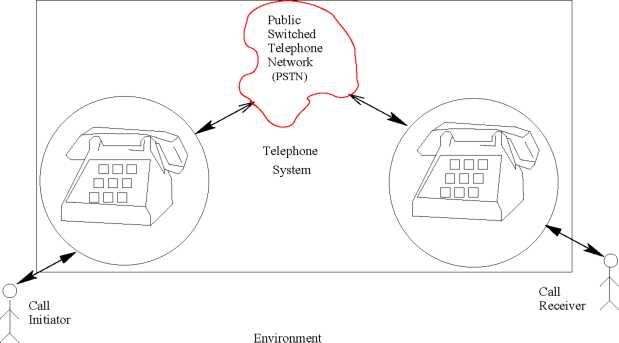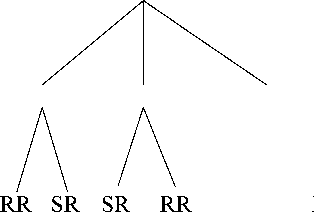
- •Introduction
- •Applications of Real-Time Systems
- •Voltage
- •Figure 7: Conversion of an Analog Signal to a 16 bit Binary Number
- •Figure 11: Schematic Representation of tmr
- •It is relatively simple to design a hardware equipment to be fault-tolerant. The following are two methods that are popularly used to achieve hardware fault-tolerance:
- •Software Fault-Tolerance Techniques
- •Types of Real-Time Tasks
- •Timing Constraints
- •Events in a Real-Time System
- •Figure 16: Delay Constraint Between Two Events el and e2
- •Examples of Different Types of Timing Constraints
- •Figure 19: Classification of Timing Constraints
- •Real-Time Task Scheduling
- •Figure 1: Relative and Absolute Deadlines of a Task
- •Figure 2: Precedence Relation Among Tasks
- •Types of Real-Time Tasks and Their Characteristics
- •Classification of Real-Time Task Scheduling Algorithms
- •Figure 5: An Example Schedule Table for a Cyclic Scheduler
- •Figure 6: Major and Minor Cycles in a Cyclic Scheduler
- •Comparison of Cyclic with Table-Driven Scheduling
- •Hybrid Schedulers
- •Event-driven Scheduling
- •Is edf Really a Dynamic Priority Scheduling Algorithm?
- •Implementation of edf
- •Figure 10: Priority Assignment to Tasks in rma
- •We now illustrate the applicability of the rma schodulability criteria through a few examples.
- •Deadline Monotonic Algorithm (dma)
- •Handling Aperiodic and Sporadic Tasks
- •Dealing With Task Jitter
- •W Good real-time task scheduling algorithms ensure fairness to real-time tasks while scheduling.
- •State whether the following assertions are True or False. Write one or two sentences to justify your choice in each case.
- •Figure 2: Unbounded Priority Inversion
- •Highest Locker Protocol(hlp)
- •Priority Ceiling Protocol (pcp)
- •Comparison of Resource Sharing Protocols
- •Handling Task Dependencies
- •Fault-Tolerant Scheduling of Tasks
- •Clocks in Distributed Real-Time Systems
- •Clock Synchronization
- •Figure 1: Centralized synchronization system
- •Cn Slave clocks
- •Commercial Real-Time Operating Systems
- •Time Services
- •Clock Interrupt Processing
- •Providing High Clock Resolution
- •Figure 2: Use of a Watchdog Tinier
- •Unix as a Real-Time Operating System
- •In Unix, dynamic priority computations cause I/o intensive tasks to migrate to higher and higher priority levels, whereas cpu-intensive tasks are made to seek lower priority levels.
- •Host-Target Approach
- •Preemption Point Approach
- •Self-Host Systems
- •Windows As a Real-Time Operating System
- •Figure 9: Task Priorities in Windows nt
- •Open Software
- •Genesis of posix
- •Overview of posix
- •Real-Time posix Standard
- •Rt Linux
- •7.8 Windows ce
- •Benchmarking Real-Time Systems
- •Figure 13: Task Switching Time Among Equal Priority Tasks
- •Real-Time Communication
- •Figure 2: a Bus Architecture
- •Figure 4: Logical Ring in a Token Bus
- •Soft Real-Time Communication in a lan
- •Figure 6: Priority Arbitration Example
- •Figure 8: Problem in Virtual Time Protocol
- •Figure 9: Structure of a Token in ieee 802.5
- •Figure 10: Frames in the Window-based Protocol
- •Performance Comparison
- •A Basic Service Model
- •Traffic Characterization
- •Figure 16: Constant Bit-Rato Traffic
- •Routing Algorithms
- •Resource Reservation
- •Resource Reservation Protocol (rsvp)
- •Traffic Shaping and Policing
- •Traffic Distortion
- •Traffic Scheduling Disciplines
- •Figure 20: Packet Service in Jittor-edd
- •Differentiated Services
- •Functional Elements of DiffServ Architecture
- •Real Time Databases
- •Isolation: Transactions are executed concurrently as long as they do not interfere in each other’s computations.
- •Real-Time Databases
- •Real-Time Database Application Design Issues
- •Temporal Consistency
- •Concurrency Control in Real-Time Databases
- •It can bo shown that pcp is doadlock froo and single blocking. Rocolloct that single blocking moans that once a transaction starts executing after being blocked, it may not block again.
- •Speculative Concurrency Control
- •Comparison of Concurrency Control Protocols
- •Commercial Real-Time Databases
- •Figure 16: Uniform Priority Assignment to Tasks of Example 15
- •Version 2 cse, iit Kharagpur
Figure 16: Delay Constraint Between Two Events el and e2
Deadline: A deadline constraint captures the permissible maximum separation between any two arbitrary events e± and e-2- In other words, the second event (i.e. e2) must follow the first event (i.e. ei) within the permissible maximum separation time. Consider that t(e 1) and t(e2) are the time stamps on the occurrence of the events e± and e-2 respectively and d is the deadline as shown in Fig. 17. In Fig. 17, Д denotes the actual separation between the time of occurrence of the two events e± and e-2, and d is the deadline. A deadline constraint implies that e-2 must occur within d time units of ei’s occurrence. We can alternatively state that t(e 1) and t{e-2,) must satisfy the constraint:
t(e-2) - t(ei) < d <= d
- >- i
I
I
d
t = 0 t(e1) t(e2)
Figure 17: Deadline Constraint Between Two Events el and e2
The deadline and delay constraints can further be classified into two types each based on whether the constraint is imposed on the stimulus or on the response event. This has been explained with some examples in Sec. 7.2.
Figure
18: Schematic Representation of a Telephone System
Duration: A duration constraint on an event specifies the time period over which the event acts. A duration constraint can either be minimum type or maximum type. The minimum type duration constraint requires that once the event starts, the event must not end before a certain minimum duration; whereas a maximum type duration constraint requires that once the event starts, the event must end before a certain maximum duration elapses.
Examples of Different Types of Timing Constraints
We illustrate the different classes of timing constraints by using the examples from a telephone system discussed in [1]. A schematic diagram of a telephone system is given in Fig. 18. Note that I have intentionally drawn an old styled telephone, because its operation is easier to understand! Here, the telephone handset and the Public Switched Telephone Network (PSTN) are considered as constituting the computer system and the users as forming the environment. In the following, we give a few simple example operations of the telephone system to illustrate the different types of timing constraints.
Deadline constraints: In the following, we discuss four different types of deadline constraints that may be identified in a real-time system depending on whether the two events involved in a deadline constraint are stimulus type or response type.
Stimulus-Stimulus(SS): In this case, the deadline is defined between two stimuli. This is a behavioral constraint, since the constraint is imposed on the second event which is a stimulus. An example of an SS type of deadline constraint is the following:
Once a user completes dialling a digit, he must dial the next digit within the next 5 seconds. Otherwise an idle tone is produced.
In this example, the dialing two consecutive digits represents the two stimuli to the telephone system.
Stimulus^Response(SR): In this case, the deadline is defined on the response event, measured from the occurrence of the corresponding stimulus event. This is a performance constraint, since the constraint is imposed on a
response event. An example of an SR type of deadline constraint is the following:
Once the receiver of the hand set is lifted, the dial tone must be produced by the system within 2 seconds, otherwise a beeping sound is produced until the handset is replaced.
In this example, the lifting of the receiver hand set represents a stimulus to the telephone system and production of the dial tone is the response.
Response-Stimulus(RS): Here the deadline is on the production of response counted from the corresponding stimulus. This is a behavioral constraint, since the constraint is imposed on the stimulus event. An example of an RS type of deadline constraint is the following:
Once the dial tone appears, the first digit must be dialed within 30 seconds, otherwise the
system enters an idle state and an idle tone is produced.
Response^Response(RR): An RR type of deadline constraint is defined on two response events. In this case, once the first response event occurs, the second response event must occur before a certain deadline. This is a performance constraint, since the timing constraint has been defined on a response event. An example of an RR type of deadline constraint is the following:
Once the ring tone is given to the callee, the corresponding ring back tone must be given to the caller within two seconds, otherwise the call is terminated.
Here ring back tone and the corresponding ring tone are the two response events.
Delay Constraint:
We can identify only one type of delay constraint (SS type) in the telephone system example that we are considering. However, in other problems it may be possible to identify different types of delay constraints. An SS type of a delay constraint is a behaviorial constraint. An example of an SS type of delay constraint is the following:
Once a digit is dialled, the next digit should be dialled after at least 1 second. Otherwise, a
beeping sound is produced until the call initiator replaces the handset.
Here the delay constraint is defined on the event of dialling of the next digit (stimulus) after a digit is dialled
(also a stimulus).
Duration:
A duration constraint on an event specifies the time interval over which the event acts. An example of a duration constraint is the following:
If you press the button of the handset for less than 15 seconds, it connects to the local operator. If you press the button for any duration lasting between 15 to 30 seconds, it connects to the international operator. If you keep the button pressed for more than 30 seconds, then on releasing it would produce the dial tone.
Performance Constraints Behaviorial Constraints
Delay
Deadline Duration Delay Deadline Duration

![]()
![]()
